The Ambitious Displays at India Art Fair 2024 Attracted Record Attendance

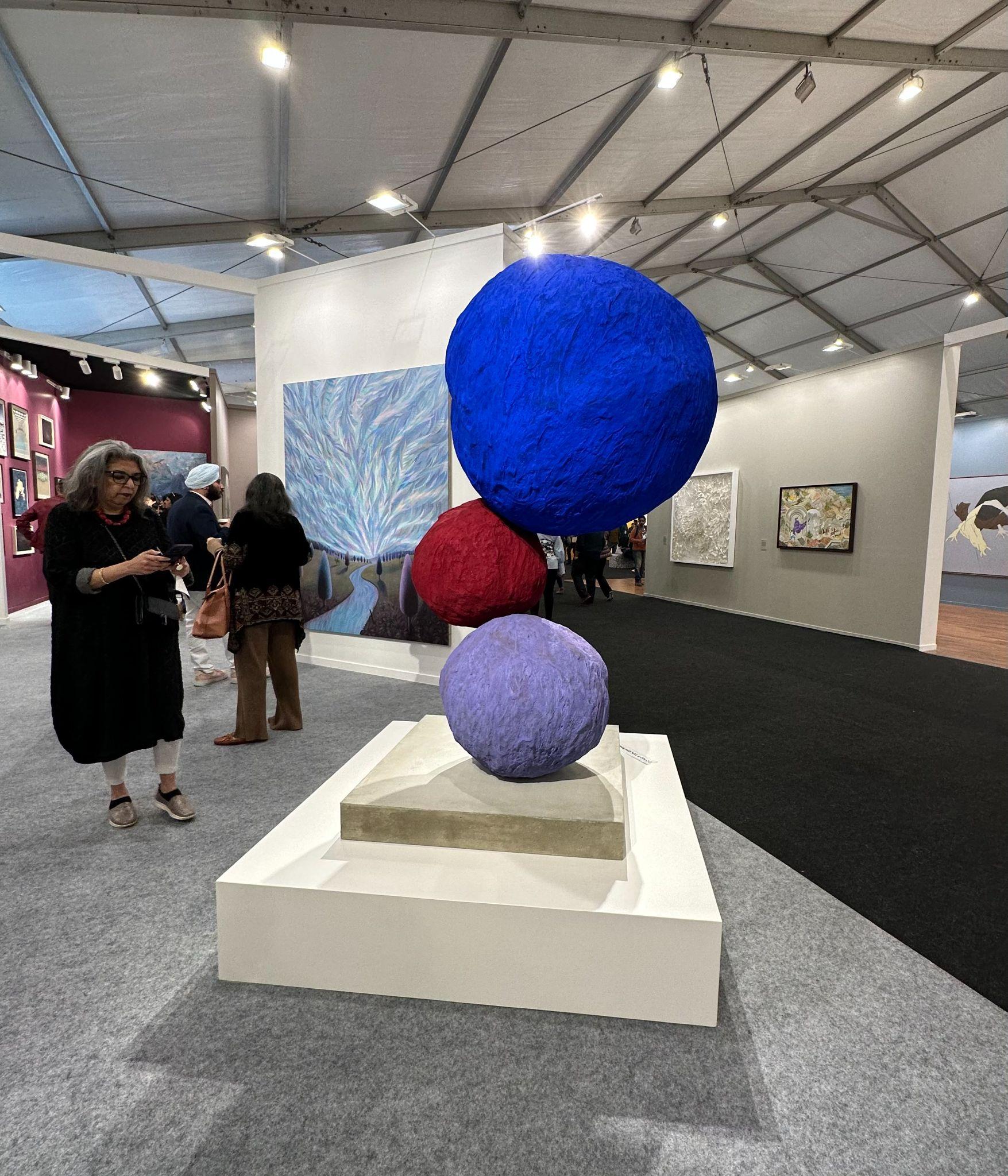
On February 1st, the art world arrived at NSIC Exhibition Grounds in New Delhi for the vernissage of one of Asia’s biggest and most popular art fairs—India Art Fair. Reportedly, on its preview day, the fair experienced a 30% visitor increase compared to last year. Owing to its massively growing popularity, surprisingly IAF declared that tickets and passes to the fair were sold out on February 3. The interest in buying art is certainly high in India’s capital. On Sunday, the fair’s last day, the organizer was compelled to shut its gates and turn away visitors.
Hosting a hundred booths, comprised of galleries, institutions, collectives, foundations, and museums. The artists positioned in these booths skewed on the younger side than in the fair’s earlier years, with the committee actively encouraging proposals that spotlight womxn, queer and regional talents. Although one spotted a handful of international galleries such as Galleria Continua or Marc Straus, the artists at the fair naturally skewed South-Asian. And, with the Indian economy booming, there was no shortage of ambitious displays (or prices) at the booths. Below are some standout booths.
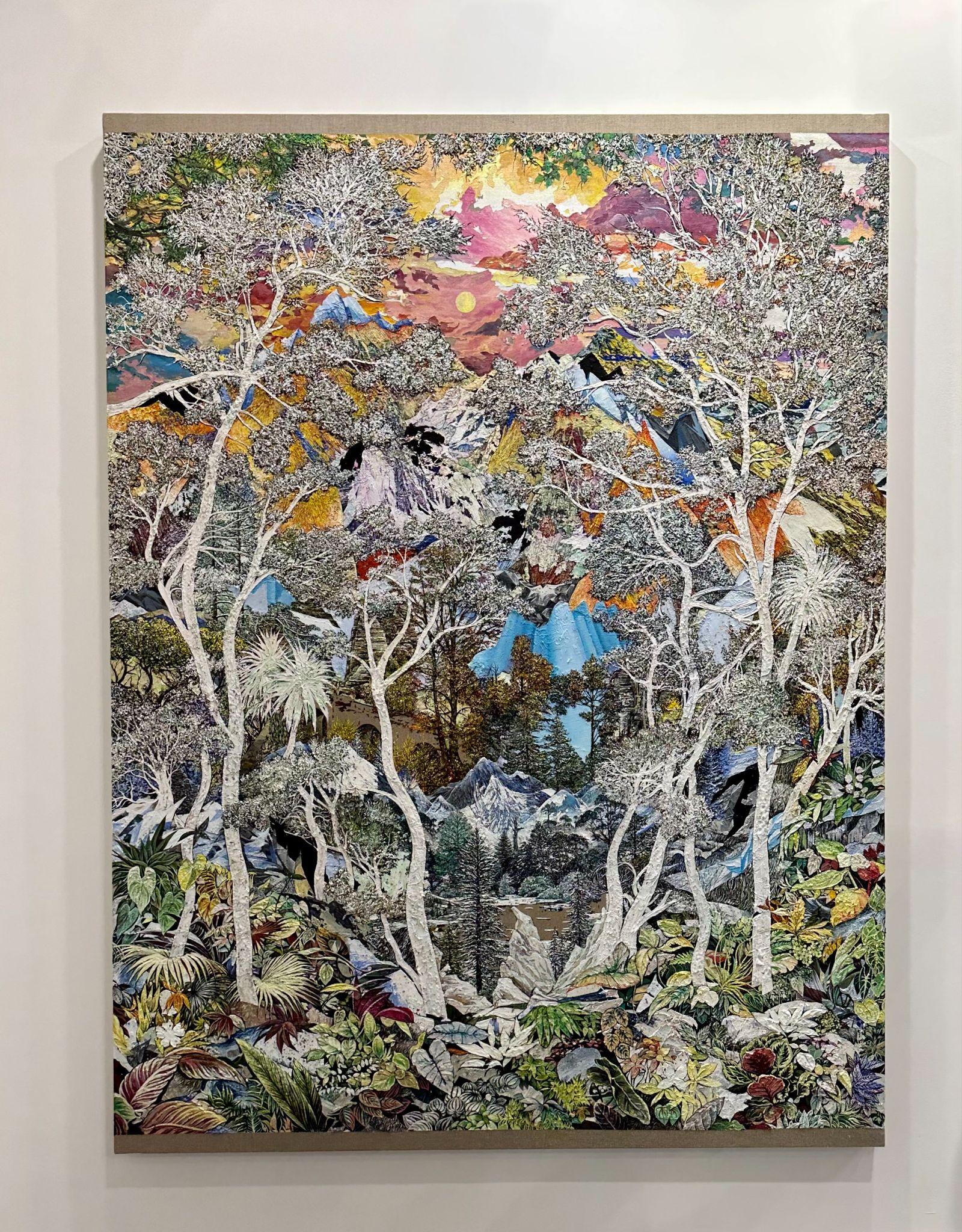
Galerie Isa
Maha Ahmed, David Brian Smith, Ian Davis, Santiago Giralda, Gregor Hildebrandt, Idris Khan, Ian Malhotra, Eeman Masood, Anoushka Mirchandani, Annie Morris, Emilie Pugh, and Ricky Vasan.
A knock-out booth, Mumbai’s Galerie Isa brought along its impressive roster of A-listers to the India Art Fair, with a balance of vivid figurations, abstractions, and surreal landscapes. While the couple Annie Morris and Idris Khan were the most acclaimed of the gallery’s cohort, the star of the exhibition was certainly Santiago Giralda. Giralda, who lives in Madrid and works extensively with landscapes, presented three oils that seamlessly blended the realms of painting and photography. Through intricate collages, he forged connections among iconic landscapes of mountains, jungles, plains, and botany, all within singular frames. His craft is marked by exceptional skill, resulting in vivid, decadent, and opulent works of art.

Jhaveri Contemporary
Amina Ahmed, Harminder Judge, Kamruzzaman Shadhin, Lubna Chowdhary, Monika Correa, Mrinalini Mukherjee, Sayan Chanda, Shezad Dawood, and Simryn Gill.
The Mumbai-based gallery Jhaveri Contemporary booth offered a diverse assortment of textiles, sculptures, photographs, and works on paper that investigated environmental phenomena. From Sayan Chanda’s triptych Three Fires, a set of cotton tapestries, to Amina Ahmed’s works on paper that lend themselves to Afghani and Kutchi textiles, the booth was flush with luscious and verdant abstractions. The standout of the booth was Harminder Judge’s Untitled (night body), a layered painting that compelled existential contemplations upon the viewer.
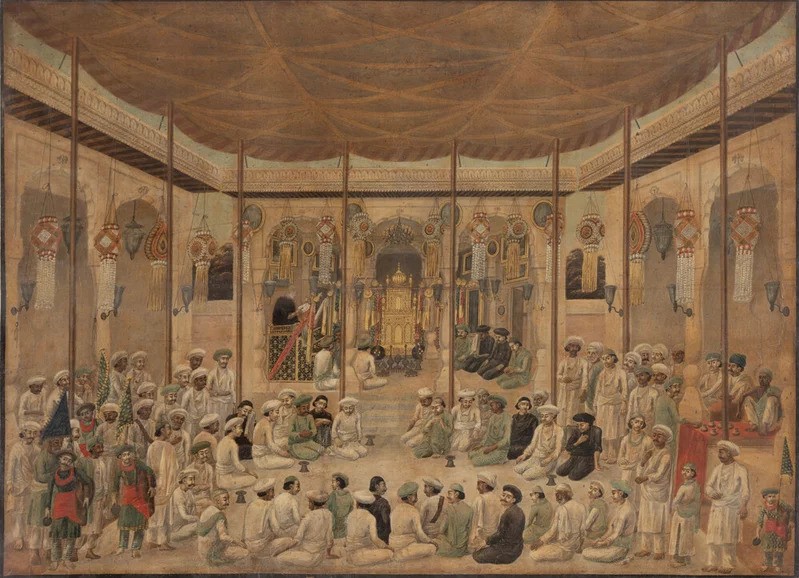
DAG
DAG, or Delhi Art Gallery which has locations in New Delhi, Mumbai, and New York, was one name on everybody’s lips. One of India’s premier institutions, DAG has documented critical art movements in the country since its inception three decades ago. Named ‘India Past and Present’ the foundation brought incredibly ornate artworks to its booth by Modern and Contemporary masters. Some of the highlights of the booth were two early 19th century works by Sewak Ram, Muharram, a watercolor highlighted with gold pigment on paper as well as Ram Durbar, a rich oil painting highlighted with gold leaf on wood from the Early Bengal School.
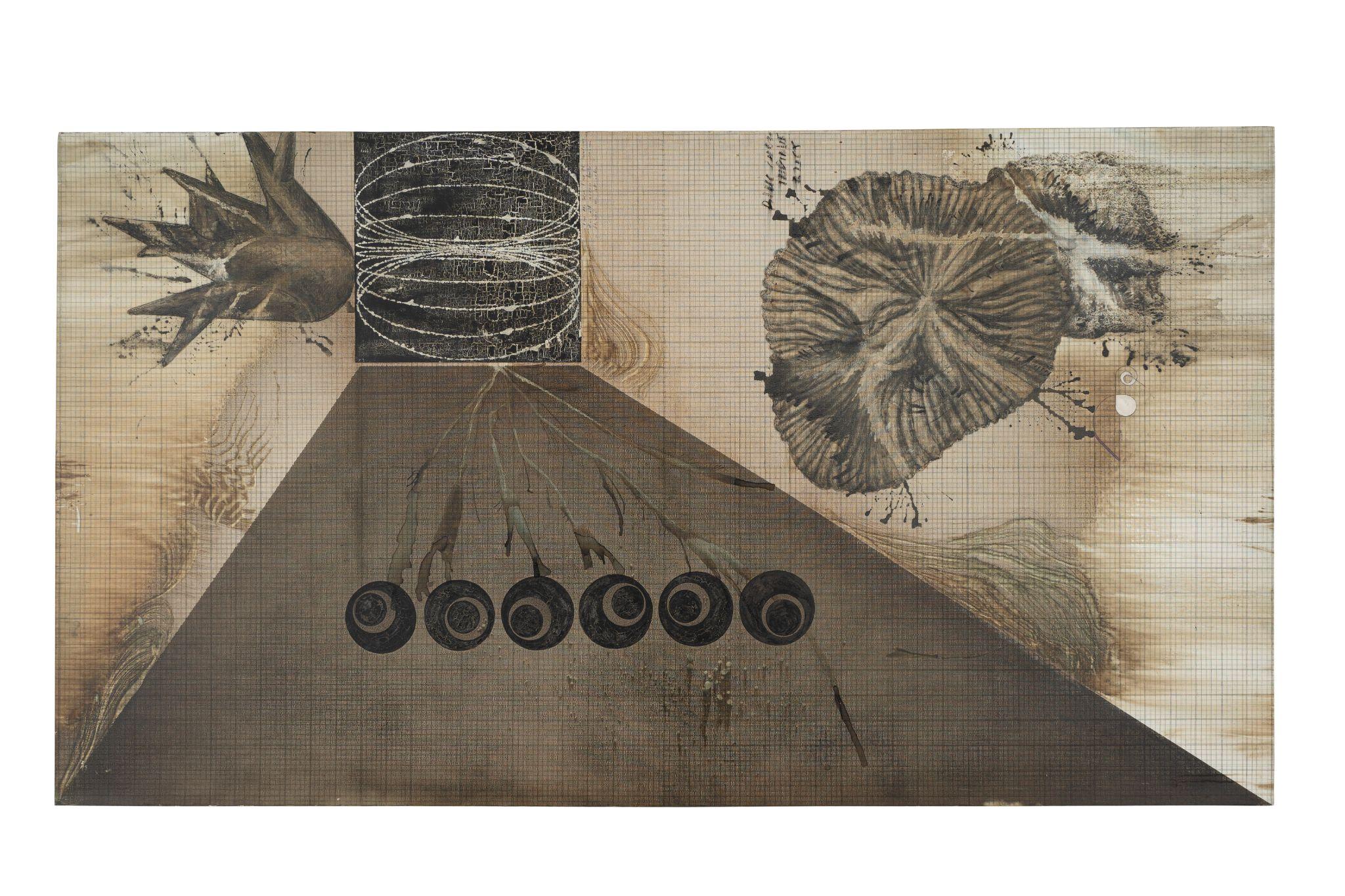
Chemould Prescott Road
Anant Joshi, Anju Dodiya, Atul Dodiya, Bhuvanesh Gowda, Dhruvi Acharya, Gigi Scaria, Jayeeta Chatterjee, Jitish Kallat, Madhvi Subrahmanian, Mithu Sen, Ritesh Meshram, Shilpa Gupta, Tallur LN, and Yardena Kurulkar
Mumbai-based gallery Chemould Prescott Road’s standout work was a painting from Jitish Kallat’s long-running series Palindrome/Anagram. Stretching 17 feet in length, the exceedingly ambitious work takes the form of an array of speculative abstractions engaging with botany, biology, geography, and the cosmological, eventually signaling a process of progression, evolution, and decay. Overall the booth leaned towards abstraction.
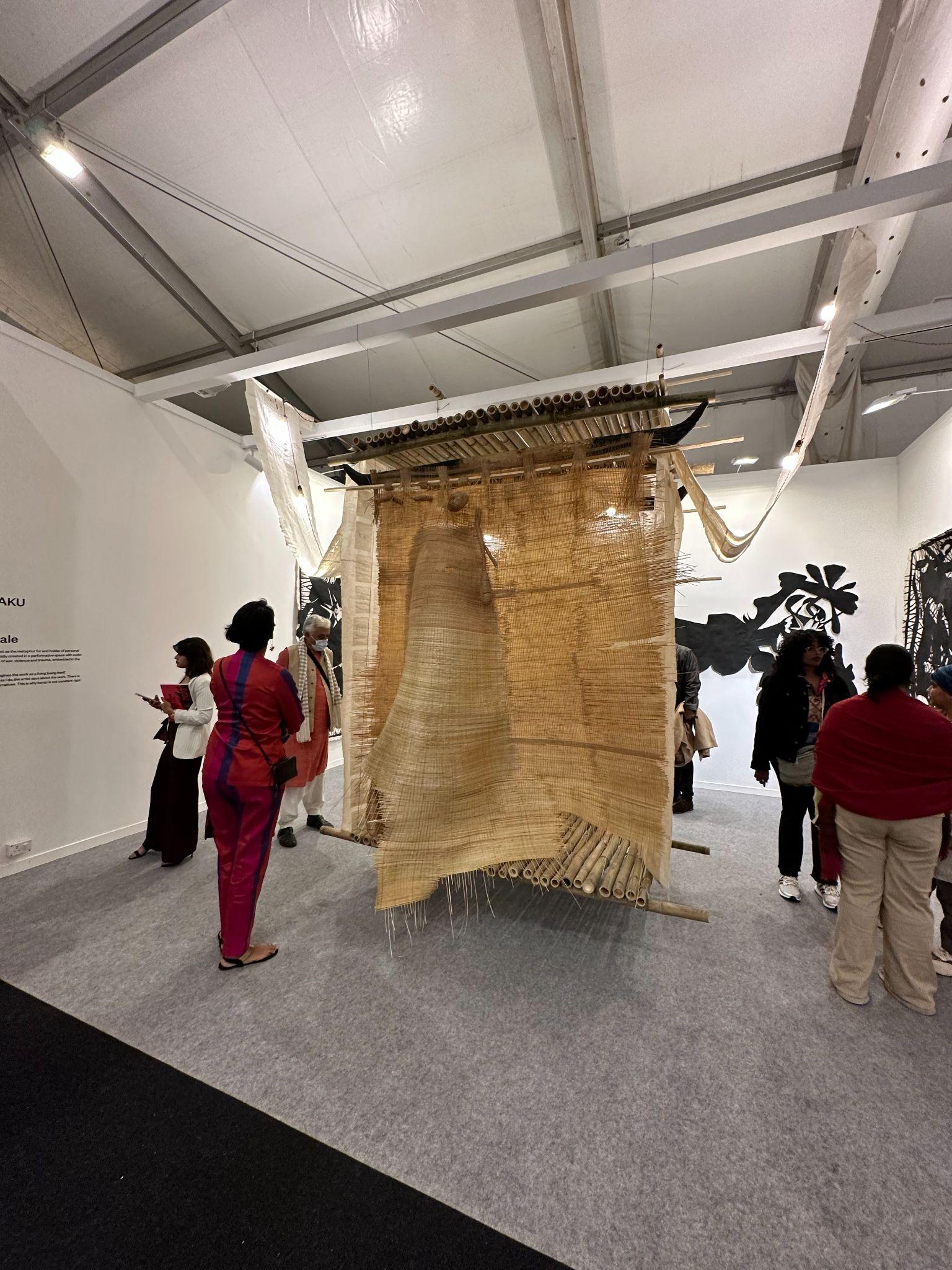

Students Biennal
Thamshangpha Merci Maku
Thamshangpha Merci Maku’s ambitious solo project was supported by the Students Biennale, which in turn is tied to the prestigious Kochi-Muziris Biennale of India. Titled Why My Karap Mourns, Maku, who resides in Baroda, explores his Manipuri identity using the Karap, a bamboo structure which although traditionally houses food, is here used as a vessel to store the collective memories of violence and trauma. The artist indulges the Karap’s mutable structure which has now been exhibited thrice and evolved at each turn. Maku believes that eventually, he and the structure become one entity.
You Might Also
Akshita Gandhi Challenges British Audiences in her ‘Love Letter’ to Mumbai
What's Your Reaction?
Anoushka Bhalla is a visual artist and writer based in New York. She received her second MFA in Fine Arts from the School of Visual Arts, New York. An immigrant from India, she is interested in philosophy, literature, history, and critical theory.

